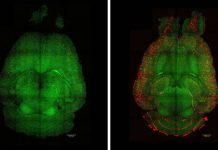Here, Professors Nigel Shrive and John Tyberg illustrate how their work has led to an alternative interpretation of hæmodynamics compared to the paradigm that was proposed over 60 years ago
Nigel Shrive is based in the Department of Civil Engineering at the University of Calgary and John Tyberg in the Departments of Cardiac Sciences and Physiology/Pharmacology. They have collaborated for over 25 years through the Biomedical Engineering program at the University. This program brings together academic staff from six different faculties to work on biomedical projects of mutual interest. Through their collaborative work, Drs Shrive and Tyberg have provided insights on the structural behaviour of the septum and possible causes of angina under abnormal loading conditions, the mechanical role of the pericardium in modulating heart function, as well as fluid-structure interaction in the major vessels supplying blood to or taking blood away from the heart. These efforts have led to a different interpretation of hæmodynamics than the paradigm that was proposed over 60 years ago, as discussed in this article. Their perspective is beginning to be accepted by some. More recently, they have concentrated on seeing if their methodology can help clinicians diagnose disease, and if their methodology can shed light on diastolic suction (when the heart relaxes after a contraction, in part, does it “suck” blood into the expanding chambers as part of the refilling process).
Pressure wave
When you touch someone’s wrist to feel their pulse, what you actually sense is the sudden expansion of the artery as a “pressure wave” passes the location of your finger. What has happened is that their heart has contracted, their aortic valve has opened, and a volume of blood (typically ~ 70 mL in an adult human) has been ejected into the aorta.
There is no flow in the aorta before the aortic valve opens but when the new blood is ejected, it quickly reaches a peak velocity of about 1 m/s and creates a pressure wave that travels down the arterial system at about 5 m/s. As it passes, the wave increases pressure locally and pushes the blood already in the arteries downstream. Therefore, the blood that passes the location you are touching at the wrist is not the blood that was ejected by the heart in that beat. After expanding from the pressure of the wave, the artery shrinks slowly back to its size at the person’s lower pressure state because of its elasticity. The pressure and flow waveforms at a given location are therefore distinctly different. Pressure and flow increase simultaneously but flow begins to decrease while pressure continues to increase momentarily. Then flow decreases rapidly back to no flow while the pressure falls slowly.
The lack of similarity between the pressure and flow waveforms causes problems if one thinks of the phenomenon as solely a function of forwards (heading away from the heart) and backwards (heading towards the heart) waves, as has been the paradigm for the last fifty years or so. The only explanation that can solve the lack of similarity is that there must be a backwards pressure wave, such that the flows cancel to produce the “no flow” period, but the pressures add. However, that means the backwards wave must flow forwards from the heart along with the forwards pressure wave caused by the heart’s contraction, such that at every location in the system the forwards and backwards waves can interact to produce the profiles of pressure and flow that are observed there. This is the inevitable result if one constrains the solution to consist only of forwards and backwards waves.
The proponents of this wave-only explanation of hæmodynamics propose the idea that there are multiple reflection sites in the arterial system from which the wave from the previous heartbeat is reflected and somehow these reflected waves accumulate in such a way as to produce the forwards moving backwards wave. However, at the wrist, for this to happen, the reflected waves would have to originate from beyond the fingertips: obviously a physical impossibility!
There is an even more complex problem in the wave-only paradigm. One’s heart rate is never perfectly constant. Indeed, it increases and decreases with activity and there is a natural variability beat-to-beat. Consider the heart rate increasing: the reflected waves have got to get back towards the heart in less time than in the previous beat to solve the problem of the non-matching profiles. How do they do that? The system would have to know the new time to the next beat before it happens and increase the wave speed (because the reflection sites are fixed) to get the waves back earlier than before. This would require a highly sophisticated control system that not only “knows” ahead of time when your heart is going to contract next, but also can alter the stiffness of the arteries and/or the constituency of the blood such that the wave speed is adjusted perfectly for every beat. There is no evidence of such a refined control system, and if there were one, surely it would go wrong on occasion and there would be diseases associated with its malfunction: there are no such diseases.
We, therefore, do not accept the explanation of hæmodynamics as there being only waves in a non-dilating tube. We analyse the pressure and flow waves at a given location differently, considering that part of the pressure profile generates the flow wave and that the remainder expands the elastic artery. We use the period in the pressure and flow profiles of next-to-no-flow to determine the pressure associated with the expansion of the artery. When we subtract out the pressure that we calculate to cause the increase in volume of the artery from the overall pressure profile at a particular location, the remaining pressure (i.e., the wave-related pressure) matches the flow profile at that location exactly. Thus, we separate the pressure profile into two parts – one associated with wave generation and the other with volume change. We have called these the wave and reservoir components, but we recognise the reservoir part is a wave phenomenon as well (i.e., it is a travelling disturbance). An extremely important feature of our approach is that each heartbeat is treated as an individual event. There is no need for the system to know when the next beat will occur. With our methodology, we do find there are reflected waves of small magnitude that do have minor effects on the pressure profile – for example, reflections from sites at which the arterial area changes (for more detail on our approach, see “JV Tyberg, Wave Propagation and Reflection in the Aorta and Implications of the Aortic Windkessel, Exploration of Medicine, 2021;2:198-207”). We have applied our methodology to both outlets of the heart (the systemic and pulmonary networks) as well as to both inlets to the heart (the cavae and the pulmonary veins). The results explain all experimental findings to date.
Given the realistic interpretation of hæmodynamics that our approach provides, perhaps it is time for cardiovascular mechanics to acknowledge the practical facts of what you feel when taking a pulse – the passing of a pressure wave that causes the artery to expand as well as the blood to flow. Cardiologists should be taught to understand an analytical approach that reflects reality in that it does not posit forward-going “backward waves” or equal and opposite diastolic flow waves.
Please note: This is a commercial profile








